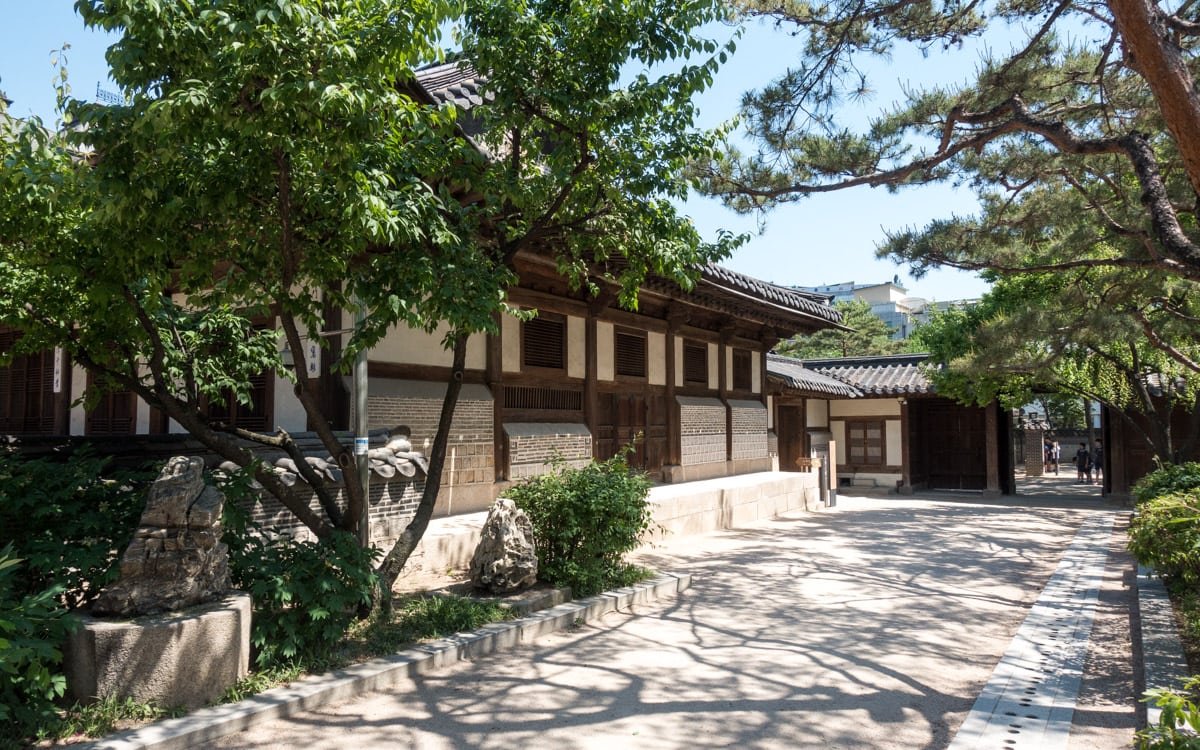
Unhyeongung Palace, also known as Unhyeongung Royal Residence, is a small palace located in the center of Seoul. Gojong, 26th king and emperor of Korea, was born at Unhyeongung Palace on September 8, 1852. He lived here until age 12 when he ascended to the throne. The residence was owned by Heungseon Daewongun, the father of Gojong.
Heungseon Daewongun lived here for most of his life. His time was spent handling business and political issues. During his free time he would paint, read, and write.
Closed on Mondays.
Admission is free.
Ordered by Queen Mother Jo, the residence was renovated into a grand complex with four gates. The buildings created were modest in design with mostly natural wood. Though not as grand as the other palaces in Seoul, Unhyeongung is a fine representation of the homes of noblemen during the late Joseon Dynasty period.
Norakdang Hall, a women’s residence, and Noandang Hall, the men’s residence, were built in 1864. This was during the first year of Gojong’s rule. Irodang Hall, an exclusive residence for women, was built five years later in 1869.
During the Joseon Dynasty, the palace was a center or neo-Confucian thought, which was the idea of basing civil progress on merit rather than lineage.
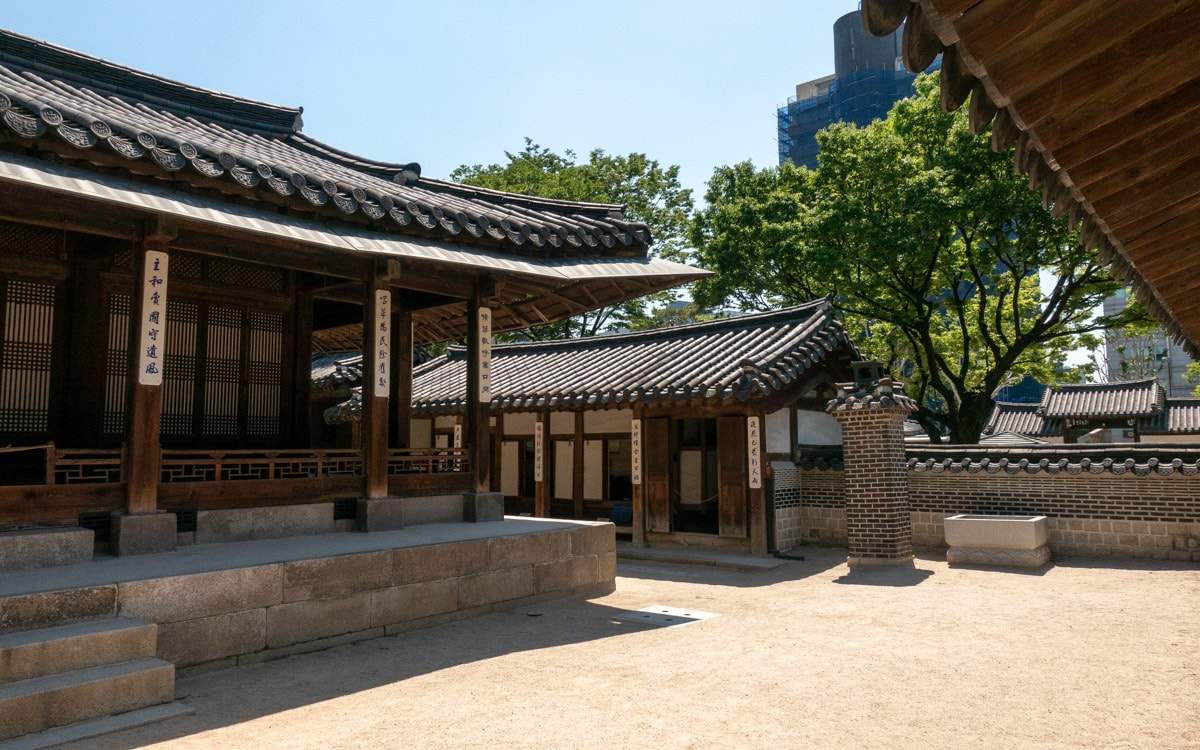
On March 21, 1866, King Gojong and Empress Myeongseong (Queen Min) were married on the grounds of the palace. Twice a year, a reenactment of the wedding is held here. The reenactment ceremony is a great way for visitors to learn about the lifestyles and history of the Joseon dynasty and the royal family.
Following the death of Heungseon Daewongun, the residence was inherited by his eldest son Yi Jaemyeon. During the Japanese occupation of Korea, the complex was taken from the relatives of Daewongun. It was not returned until 1948. Much of the palace was destroyed or damaged during the Korean War. In 1993, the palace and buildings were sold to the government of Seoul, who spent three years renovating the palace to some of its former appearance.
Today, the palace is much smaller than it was originally. Duksung Women’s University now occupies some of the former grounds of the palace.
Many of the interiors of the reconstructed buildings have also been refurbished. Some of them feature mannequins wearing hanok, a type of traditional Korean dress. This gives visitors a better understanding of what life was like at the palace during the Joseon Dynasty.
Unhyeongung Palace is located near Insadong in the business district of downtown Seoul. The palace grounds and its charming wooden buildings are a great place for a stroll as most tourists like to focus their time on some of the other larger palaces in Seoul.
What to see at Unhyeongung Palace
Irodang Hall

Irodang Hall was the main building of the palace and the exclusive residence for women. The wife of Yi Haeung, or Heungseon Daewongun, lived here. He ran the day to day affairs of the royal residence from this location.
Construction on Irodang was completed in 1869. It was built as the house of Heungseon Daewongun and his wife after the marriage of King Gojong and Empress Myeongseong (Queen Min).
The structure features eight rooms in the front and seven rooms in the side.
The shape of the hall along with its tall steps kept intruders out along with men who were strictly forbidden from entering.
An old well can be found outside of the building just across the open yard. A path with rock structures that resembles various animals leads to nearby Norakdang, another residence for women.
Noandang Hall
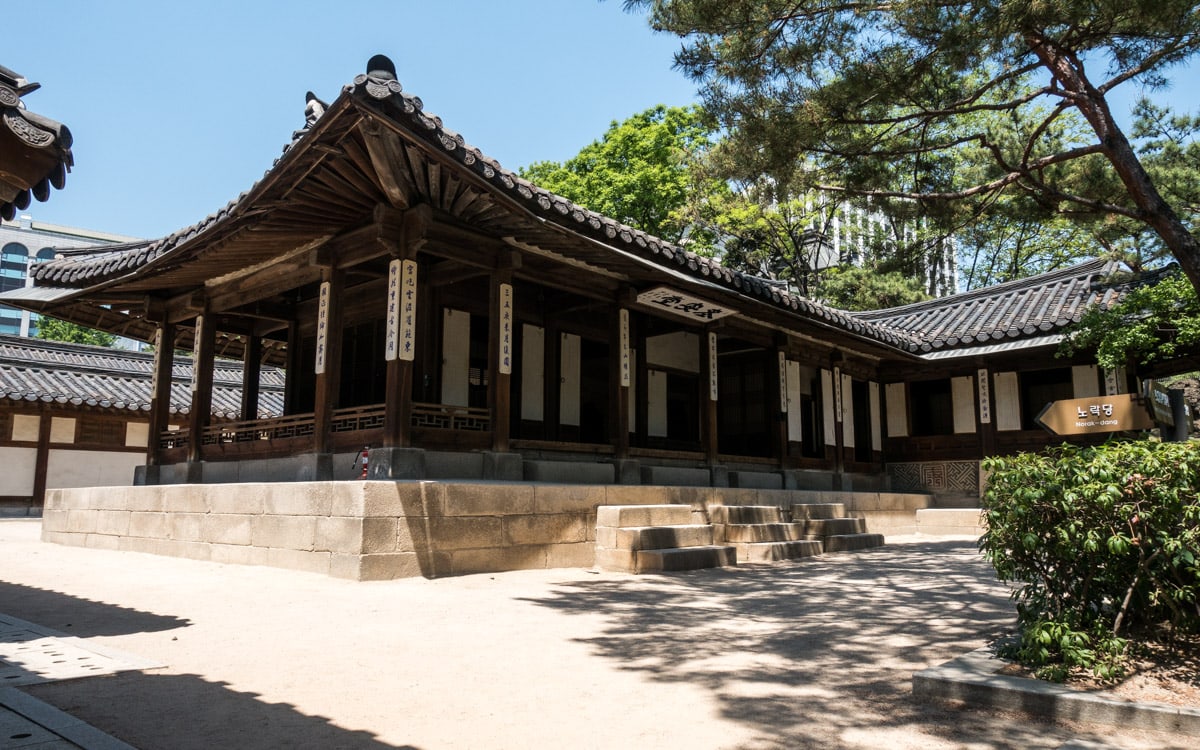
Noandang Hall served as the men’s residence at Unhyeongung. Here, Yi Haeung, or Heungseon Daewongun, read, wrote, painted, rested, and met with guests. The word Noan means old man who is comfortable and at ease. Men felt relaxed and at ease while in this building.
Construction on Noandang, along with Norakdang Hall, was completed in 1864 during the first year of the reign of King Gojong. Gojong was the twenty sixth and last king of the Joseon Dynasty and also the first emperor of Korea.
The building features a traditional Korean tile roof. There are six rooms in the front and three rooms on the side. Beams attached to the edge of the roof functioned as awnings. This feature shows architecture styles in the 19th century.
The hall was important for other activities other than leisure. Heungseon Daewongun, whose son was the emperor, handled business and political matters from this location.
During his free time, Heungseon Daewongun would paint here. He mostly enjoyed painting scenes of orchids.
Cheonhajangan was the right hand man and bodyguard of Heungseon Daewongun while he stayed at the hall. His duties included security and collecting information about political enemies.
The original tablet that hung here is now on display at the Seoul Museum of History.
Nearby is an exhibition hall with relics from the life of Heungseon Daewongun.
Norakdang Hall

Norakdang Hall was one of the residence halls for women at Unhyeongung. The other was Irodang Hall. This is the largest building at Unhyeongung. Construction on Norakdang, along with Noandang, was completed in 1864 during the first year of the reign of King Gojong. Gojong was the twenty sixth king of the Joseon Dynasty and the first emperor of Korea.
The hall features ten rooms in the front and three rooms on the side. Lattice, or criss-crossed patterns, have been well preserved. Horizontal roof beams known as purlins feature a depiction of a dragon.
A kitchen can be found inside which was used to prepare, cook, and serve food for the many special events and ceremonies held here.
Many important ceremonies were held here including royal birthday celebrations and weddings. It was here on March 21, 1866 that King Gojong and Empress Myeongseong (Queen Min) were married. This ceremony is reenacted each year during the spring and fall.
On the ceiling are decorations of checkered shaped lotus flowers. It was written that this building was so lofty that it was only 15cm (5.9 inches) from heaven.
Sujiksa
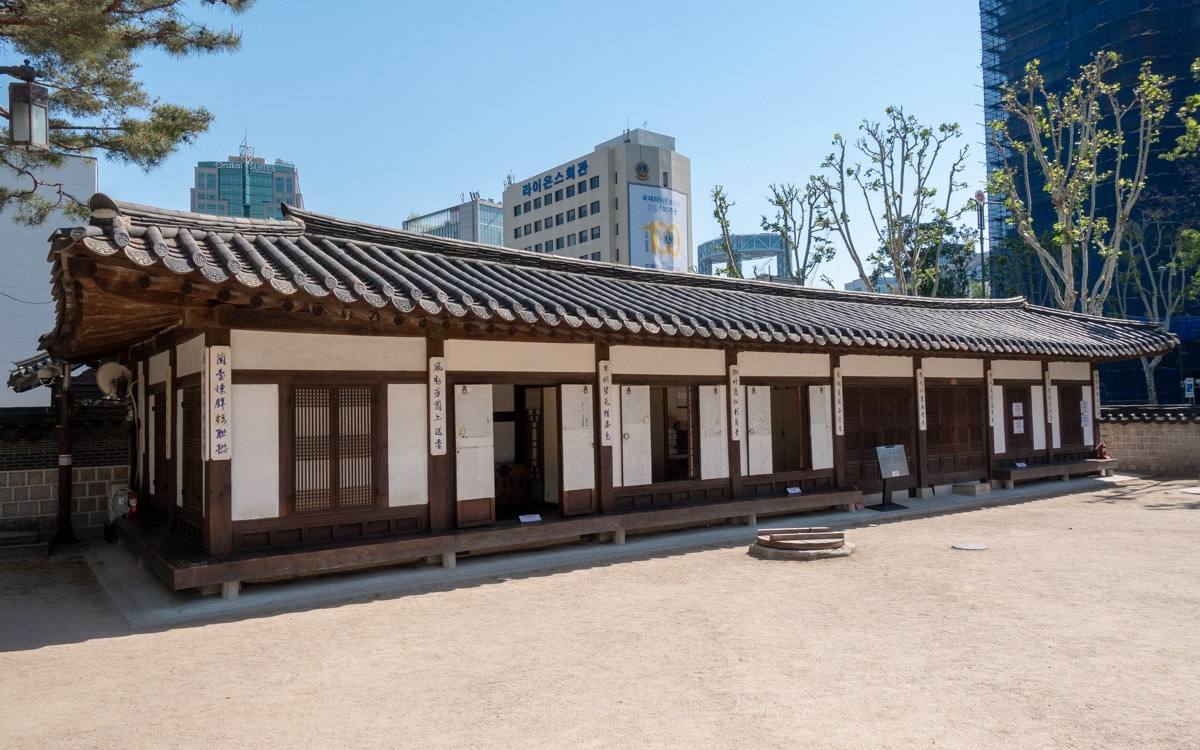
Sujiksa, located east of the main gate, is the building where stewards, guards, and maintenance men were housed. Inside the structure are artifacts such as clothing, furniture, and other daily items. There artifacts were used by security, stewards, guards, and maintenance while at the palace.
The royal residence at a time was much bigger and required a larger amount of guards and soldiers for the protection of Heungseon Daewongun. He needed more protection as he grew powerful after his son, Yi Myeong-bok, better known as Emperor Gojong, ascended to the throne in 1863.
Unhyeongung Palace Information
Hours
November-March : 9:00-18:00
April-October : 9:00-19:00
Ticket office closes 30 minutes before closing time.
Closed on Mondays and Tuesdays following national holidays.
Admission
Free
Address
464 Samil-daero, Jongno-gu, Seoul, South Korea
GPS Coordinates: 37.576181, 126.987241
How to Get Here
Option 1
Take Subway Line 3 to Anguk Station (Exit 4).
Option 2
Take Subway Line 5 to Jongno-3-ga Station (Exit 4).
Unhyeongung Palace Video
Map
Additional Resources
Viator by TripAdvisor
Viator is a popular online platform that helps travelers book tours, activities, and unique experiences worldwide, including in Seoul. It connects users with a wide selection of options – from sightseeing tours to cultural events and outdoor adventures – all offered by local providers.
Klook
Klook offers discounted tickets and reservations for various attractions and services in Seoul, from theme parks and museums to tours and transportation options.
Rakuten
Save money while exploring Seoul with Rakuten's cashback program. Book your hotels or other services through Rakuten and enjoy cashback rewards and exclusive deals.
If you sign up using the link below, you could earn $30 cashback on your first purchase over $30.
Book Recommendations
For an immersive guide to Seoul, many travelers choose to bring a book along. Fodor's Seoul, for example, offers detailed recommendations on sights, restaurants, maps, and travel tips.
Nearby Sights
Cheondogyo Central Temple
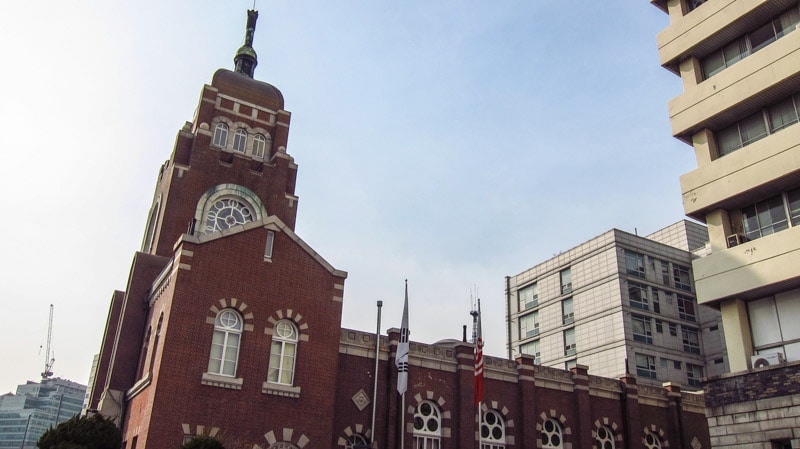
When Cheondogyo Central Temple was built between 1918 and 1921 it was used as a temple of Cheondoism, a 20th century Korean religious movement. Cheondogyo literally means "religion of the Heavenly Way." The roots of Cheondoism are based on the Confucian movement with an emphasis on Taoism, Buddhism, Korean nationalism, and ideas of peace, personal virtues, and morals while on earth.
Ssamzigil
Ssamziegil, also known as Ssamziegil, is a colorful shopping and culture complex in Insadong that features cafes, galleries, and workshops. The complex's design uniquely blends contemporary elements with traditional Korean charm. The complex opened in 2004 and is now a destination and an important centerpiece of Insadong. Ssamzigil may be modern, but its construction blends with the surrounding traditional neighborhood.
Changdeokgung Palace
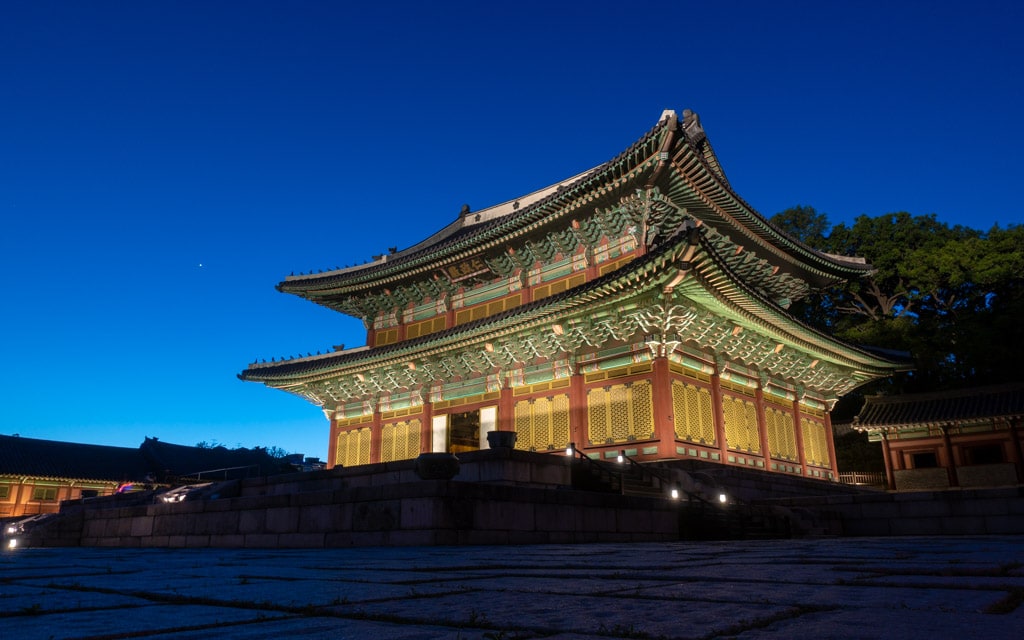
Changdeokgung Palace is a grand royal residence located east of Gyeongbokgung Palace. It is the best preserved of the remaining Joseon palaces. The palace is the second oldest in Seoul after Gyeongbokgung and was used as a secondary palace when first built. Construction on the palace known as "the palace of illustrious virtue" began in 1405 during the reign of King Taejong and was completed in 1412.
Bukchon Traditional Culture Center
The Bukchon Cultural Center is a hanok (Korean style building) that promotes the history and values of the traditional Korean Bukchon Hanok Village. The building was sold to the city of Seoul and reopened on October 29, 2002 as the Bukchon Traditional Culture Center. The hanok was once owned by the Min family.
Insadong
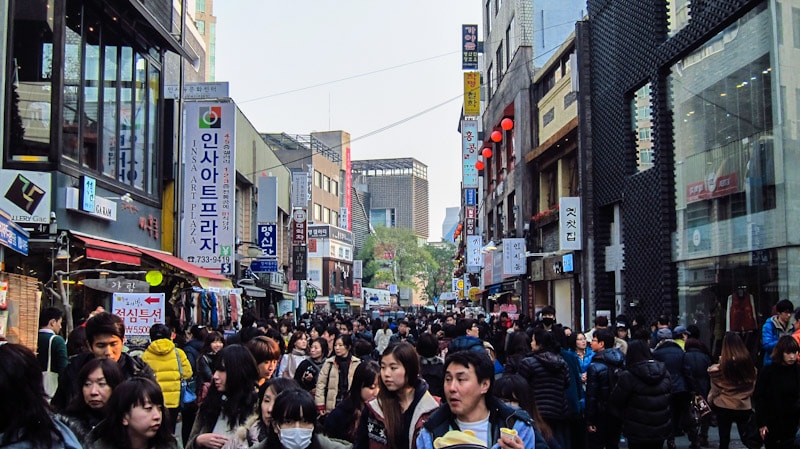
Insadong is a popular neighborhood in the heart of Seoul that is often visited by locals and tourists wanting to experience traditional culture of Korea. Streets and narrow back alleys are lined with art galleries, wooden tea houses, restaurants, cafes, and small shops selling arts and crafts. The main street, Insadong-gil, runs for 700 meters from Tapgol Park in the south to Anguk-dong Rotary.
Tteok Museum

The Tteok Museum features displays of 50 different types of tteok, or rice cakes, and utensils used to make the dish enjoyed by generations of Koreans. The museum, located in Jongno-gu just east of Insadong, first opened in December, 2002. Tteok is made using glutinous rice flour and can be made using several methods including streaming, pounding, frying, and boiling.
Last Updated on Mar 14, 2025